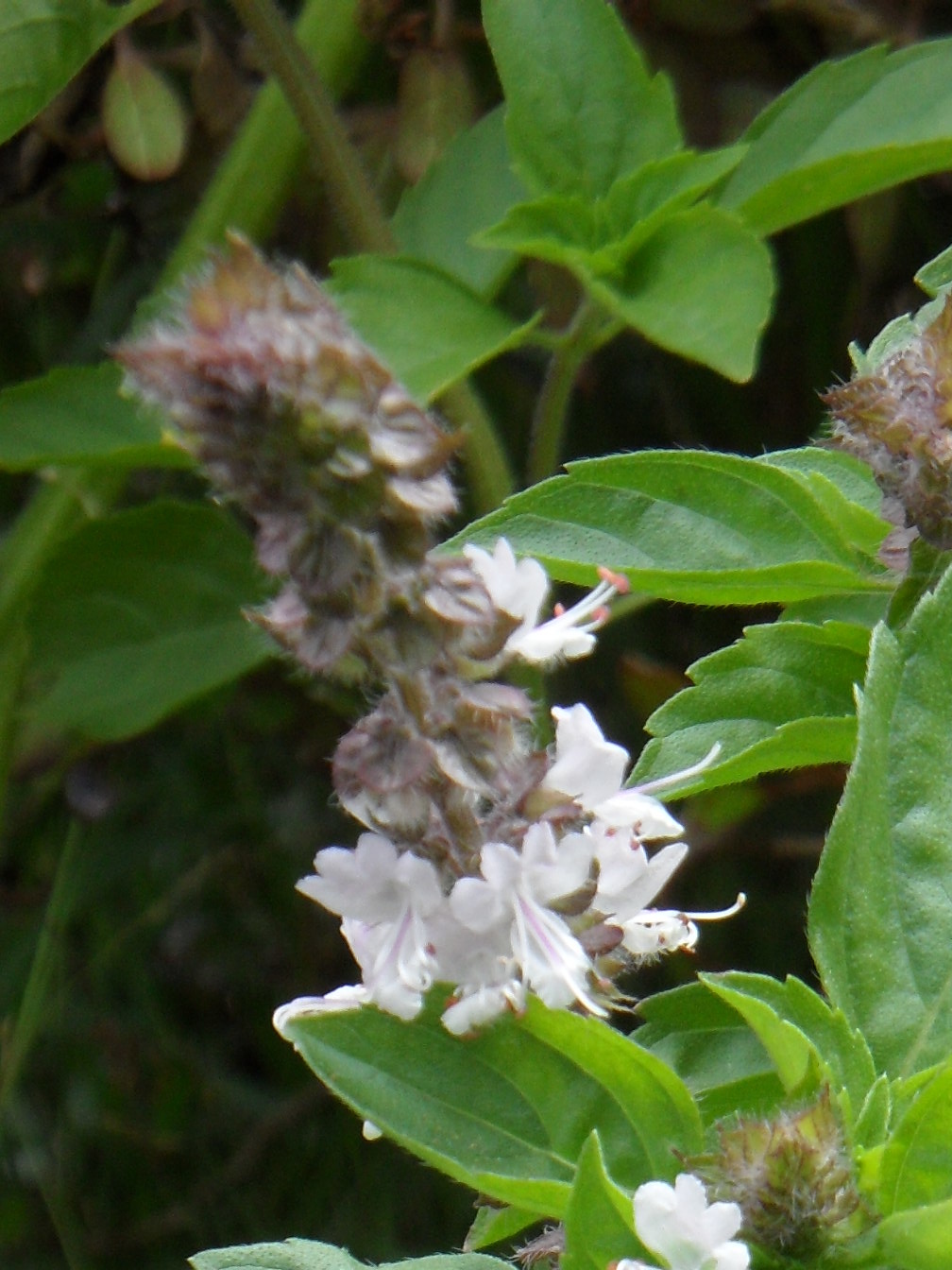
Classical name.
Aromatic, erect annual or perennial herbs and shrubs. Leaves opposite, usually stalked. Flower clusters a dense or open spike of 6-flowered whorls, the bracts variable in size, sometimes coloured or forming a terminal tuft. Flowers with calyx 2-lipped, tubular, the upper lip large, entire, lower lip more or less equally 4-lobed. Corolla 2-lobed, upper lobe of 4 more or less equal lobes, lower lip entire, white, green or pink. Stamens 4, protruding.
Seed.
O. basilicum is an important culinary herb. Other species have indigenous medicinal uses.
Leaves with characteristic smell; calyx longer than the flower tube.
About 35 species from the Old World tropics.
Paton (1992), Paton & Putievsky (1996).
Source: (2002). Lavandula. In: . Horticultural Flora of South-eastern Australia. Volume 4. Flowering plants. Dicotyledons. Part 3. The identification of garden and cultivated plants. University of New South Wales Press.
